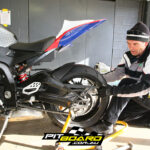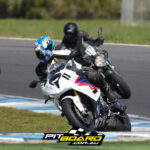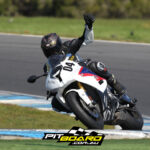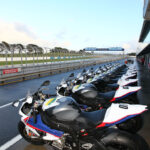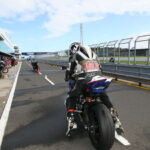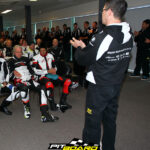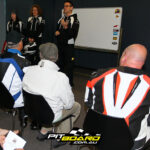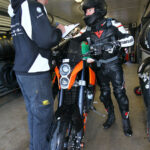The California Superbike School is world renowned for rider training and for good reason! Paul Bailey heads along to see what all the fuss is about, checking out level one through to level four…
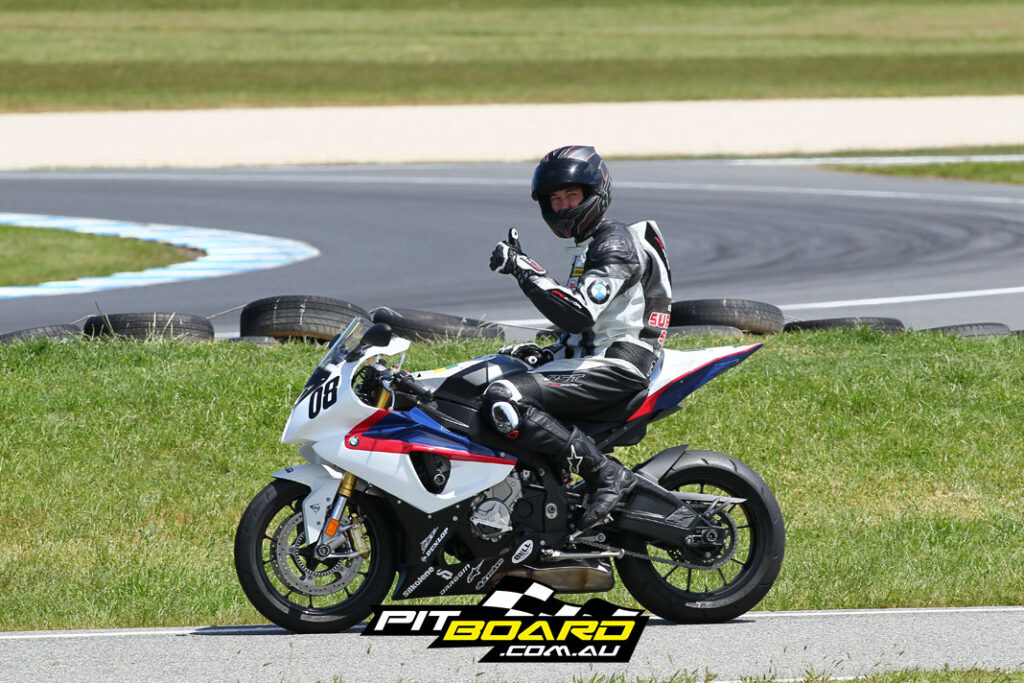
LEVEL ONE
The first thing you will notice when you start riding is that everyone is an expert. The second thing you notice is that generally, they aren’t. Enter California Superbike School. These guys actually are experts.
Check out our other rider training articles here…
Keith Code is the Founding Father of the CSS (California Superbike School) and it’s on his teachings that the school is based. If you’ve not heard of his [Twist of the Wrist] books, they’re the first documentation of the key principles relating to riding motorcycles around racetracks. He wrote the book and created the program combining theory and practice to make the track a better place for us.
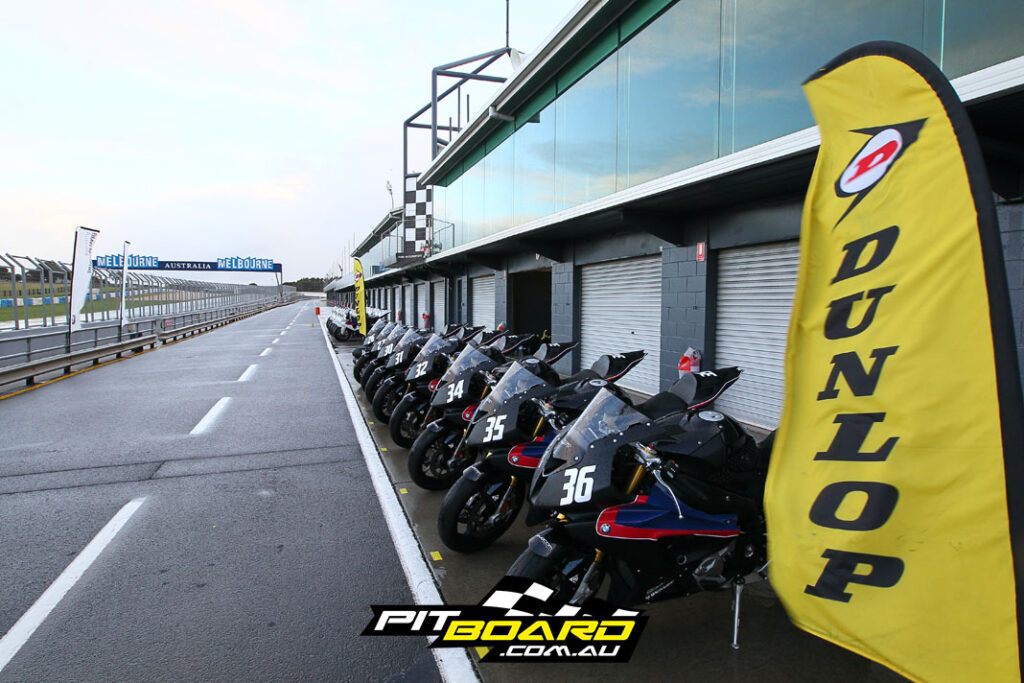
Once the gates are open we make our way to a garage, unpack all the gear and take care of all the formalities – forms to be signed, bike to go to the scrutineers, and me to be registered and assigned to a group – in this case Level 1.
Firstly, we had to cover rules and regulations. We’re taught the flags and their meanings, safe passing distance and the like. There is an eclectic group of riders in class today. The good thing is that we’re all taken back to basics, what’s more basic than throttle control?
If you want to take this stuff seriously, take a pen and paper. There is lots of info, all of it valuable. Steve almost has us chanting, “What’s your job?”, ‘Stabilise the bike.’, “With what?”, ‘With the throttle.’, “What’s your job…” It’s a quick lesson on the track, fourth gear only and no brakes allowed.
There is a stellar team of riding coaches who are teamed with us out on the track. Small groups are assigned to each coach. It’s their job for the day to shadow us on-track and give us practical instruction. You notice them waiting at certain points along the way and they’ll shoot out after you. In this first drill we’re taught hand signals that the instructors will use to show us when to roll on and off the throttle coming into and out of corners.
Choosing a turn-in point into a corner is one of those important things. It sets you up so you come out free to set up for the next turn and, on the street, stops you running into oncoming traffic. The idea is to pick your apex and straighten the turn.
This is by far my favourite lesson because, like it tells you in the drill sheet, in this one you’re spoon-fed. The turn-in points are marked for you on each corner with tape. You’re allowed the use of third and fourth gear this time, but still no brakes. But with the combination of knowing when exactly to throw my bike into the corner – and coaches leading to remind me when to roll the throttle on – my confidence soars. This is evident by my dramatically increased speed through the turns.
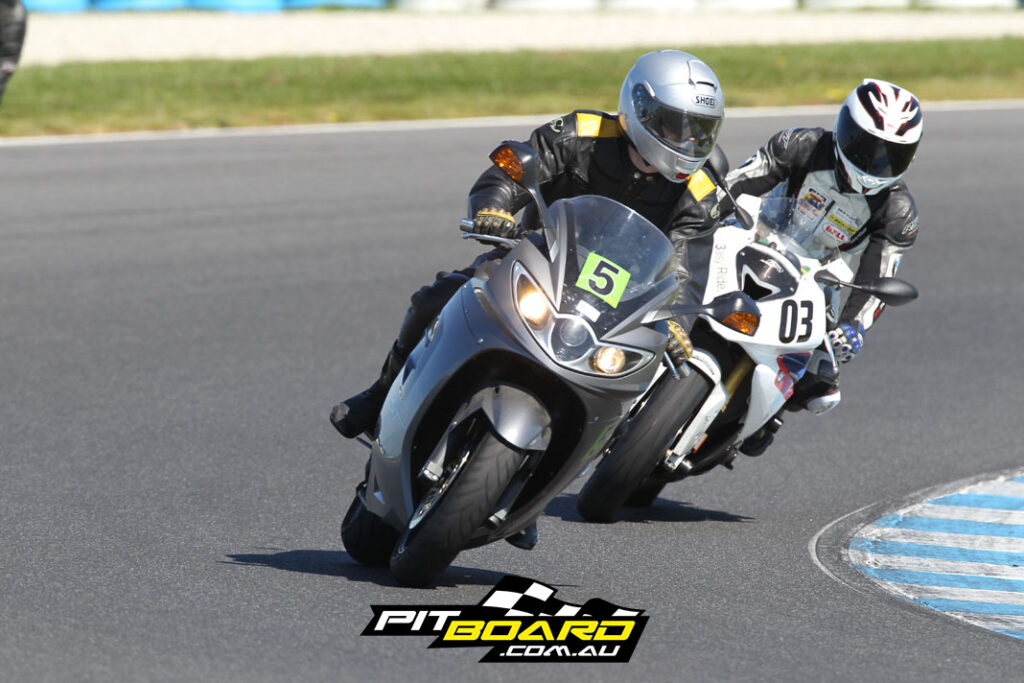
Along with a few others, I’m picked out after this classroom lesson to take our bikes up to an off-track area where we’re given individual counter-steering drills, consciously pushing down on the bars to throw the bike left or right. It doesn’t take long but it gives you a much better idea of how quickly you can have the bike move to where you want it to move.
Your bike will respond to you, your riding position, and how tightly you’re holding on to the bars. This lesson is all about learning how to relax. Light braking as well as third, fourth and fifth gears were allowed in this session.
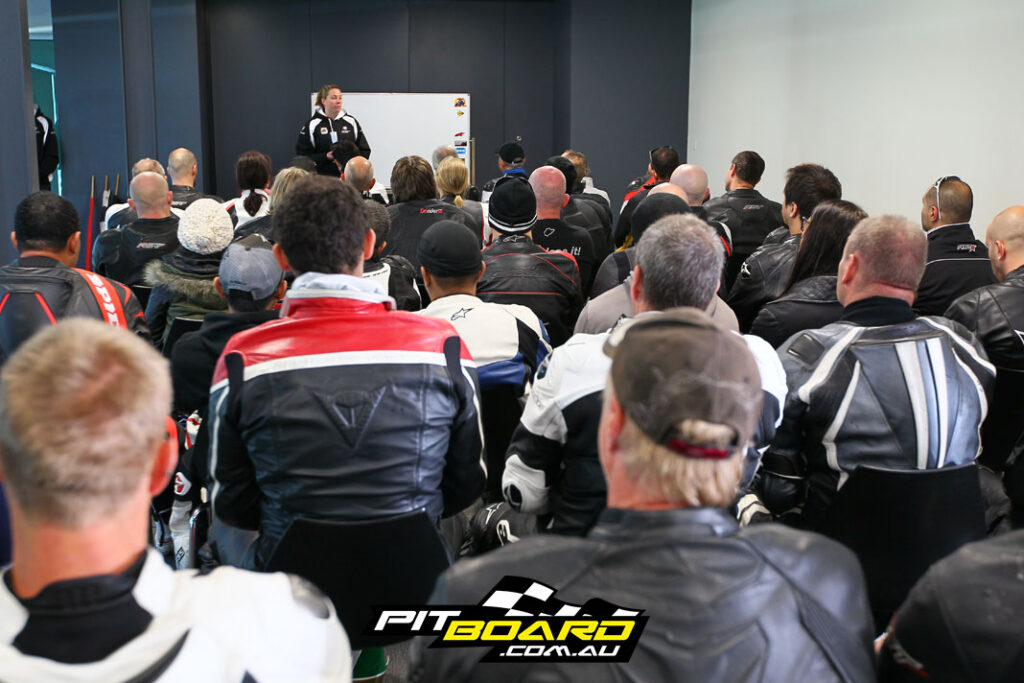
It doesn’t take long before you realise the effect that a nervous death grip on the bars has on the suspension. Leaving your arms relaxed and loose but using your stomach muscles and legs to grip the bike and control your posture allows the suspension to do what it was designed to do. Let the bike do all the work.
The last lesson was basically an intro to Level 2 visual skills and drills. Full gears and brakes allowed this time.
“Step one – Locate your entry point as soon as possible. Step two – When you’re confident you’ll hit your entry point, look in and locate the apex.”
The idea of two-step turning is to pick your apex before you start to turn your bike in. This enables you to get a more consistent line, and when you’ve got a predictable line you can increase your speed – that’s why we’re really all here, isn’t it?
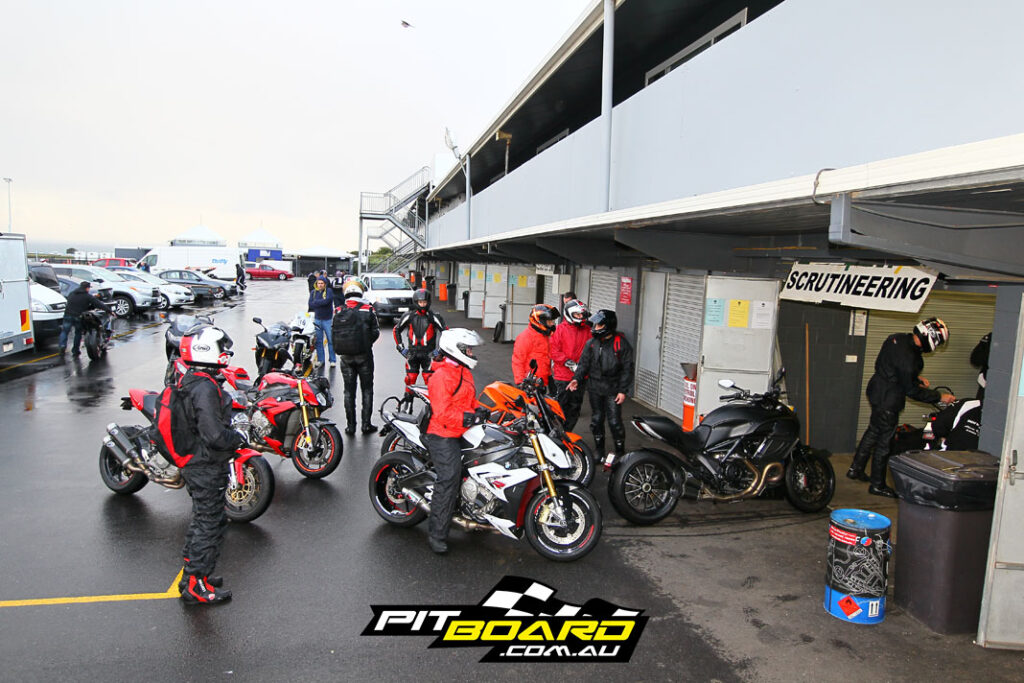
LEVEL 2
Having done the Level 1 course only a few months earlier and finding it a fantastic experience and an eye opener in many ways, I returned for the Level 2 Course.
I’m a mature rider, I turned 53 a few weeks back but I’m no stranger to riding, I’ve owned motorcycles since I was eight. In fact I’ve never been without a motorcycle in my possession since then. So I would consider myself an experienced rider, just through my years of riding alone.
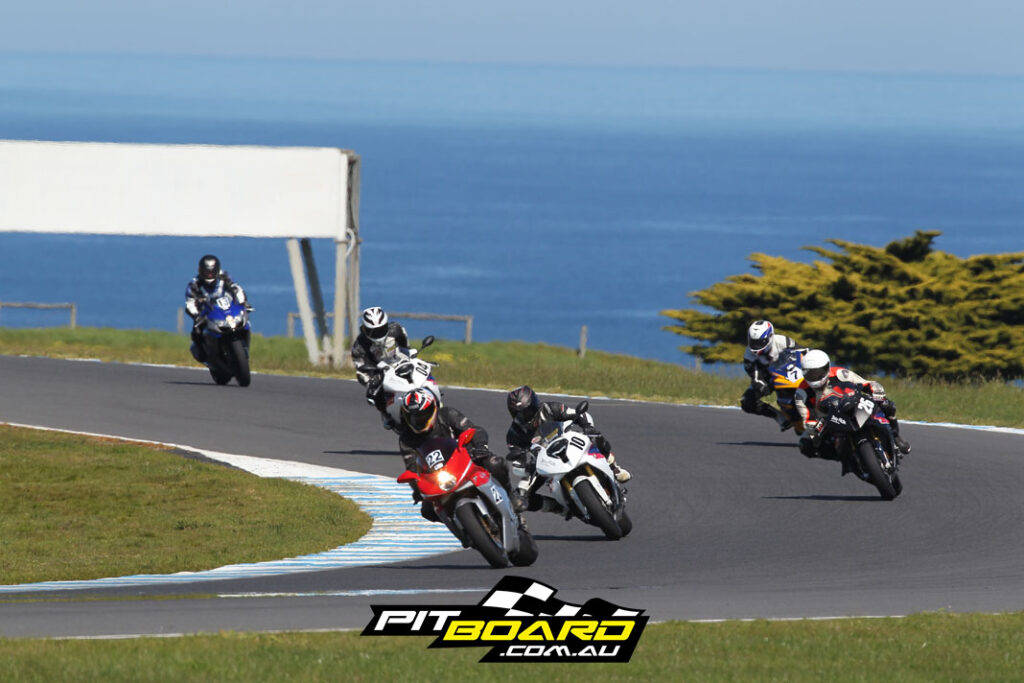
But I have also spent many years in the NSW Police Force, 18 of those years as a Police HWP motorcyclist. Obviously I had extensive training within the NSW Police Driver/Rider Training unit to deal with high-speed pursuit work, traffic work and even VIP escorts. I’ve also been racing motorcycles for most of my life, from motocross to classic road racing and more recently modern bikes and in particular BEARS racing.
So in many ways I’ve had my share of experience from many different perspectives of riding. I have learned and adapted to my chosen riding over the years but making the decision to attend the California Superbike School was a very definite positive step in my never ending learning curve of motorcycle riding.
It’s funny though, the name, California Superbike School in some ways can give a false impression of what it is all about. Yes, you will learn how to ride a superbike fast, and if you want, go racing from that tuition. But the courses also suit all riders, from sportbikes to cruisers and everything in between, you see, the School is all about teaching and then showing you in a very practical way the teachings of the creator and owner of the California Superbike School worldwide franchise, Keith Code.
Keith, over many decades of observation, training, analysis, practical application and countless hours of thought has developed the business to the point where it is arguably the best training school in the world.
“The days are extremely well run from the moment you arrive at the track to the very last moment of the day.”
The day starts with you arriving and attending the registration area, here you fill out the necessary paperwork, have you name checked off, and are given some instructions on how the day will progress, you get assigned to a particular group which is in a certain area of the pits. Numbers that are given to you have to be attached to your bike, your bike also has to be scrutineered for safety prior to the start of the day.
The day is split into sections, including classroom work with Steve Brouggy as the facilitator. Steve has a very concise and deliberate way of teaching and discussing the different tasks and drills that you will do throughout the day. Each classroom session will then be followed by a practical session on track where the tasks or drills that were given to you are applied on track. There are a large number of the school’s coaches on hand to ride with you or around you on track, even at times ushering you to follow them for a lap or so, and vice versa.
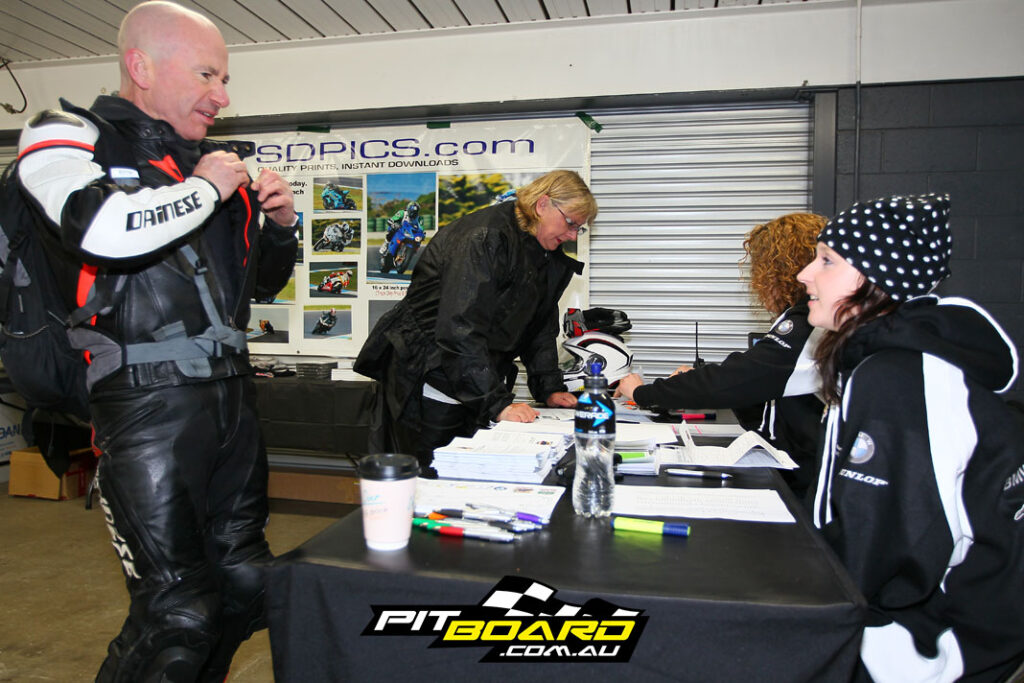
At the end of the practical session there is a sort of debrief with your allocated coach on how you went or on how the coach feels you may better do the drill and so on. The days are regulated with warning bells and announcements given as where each group needs to be at that time or within five minutes, it’s not an easy day but the time flies very quickly as you go from class to track for the day. There is a lunch break, which everyone enjoys.
Now, many of the drills you do are controlled very carefully, for example you will be required to use only one gear for the whole of the track, you may or may not be allowed to use brakes, you may be allowed to use up to fourth gear only on some drills. All of these requirements have a purpose and a deliberate meaning for the student.

If you attend the day with an attitude that you are there to learn and take something away from the day, you will have one of the best learning experiences for motorcycling that can be given to you. Level 2 really starts to open to you the whole world of rider behaviour and how to get the most from your riding with one of the best schools in the world.
The single most important thing I believe, is to come away from the day and from that day on put into practice what you have learnt and become a better rider for it. Points covered in Level 2 included Reference Points, Changing lines, Vanishing Points, Wide Screen Track View and Pick Up. This is what the California Superbike School is really all about.
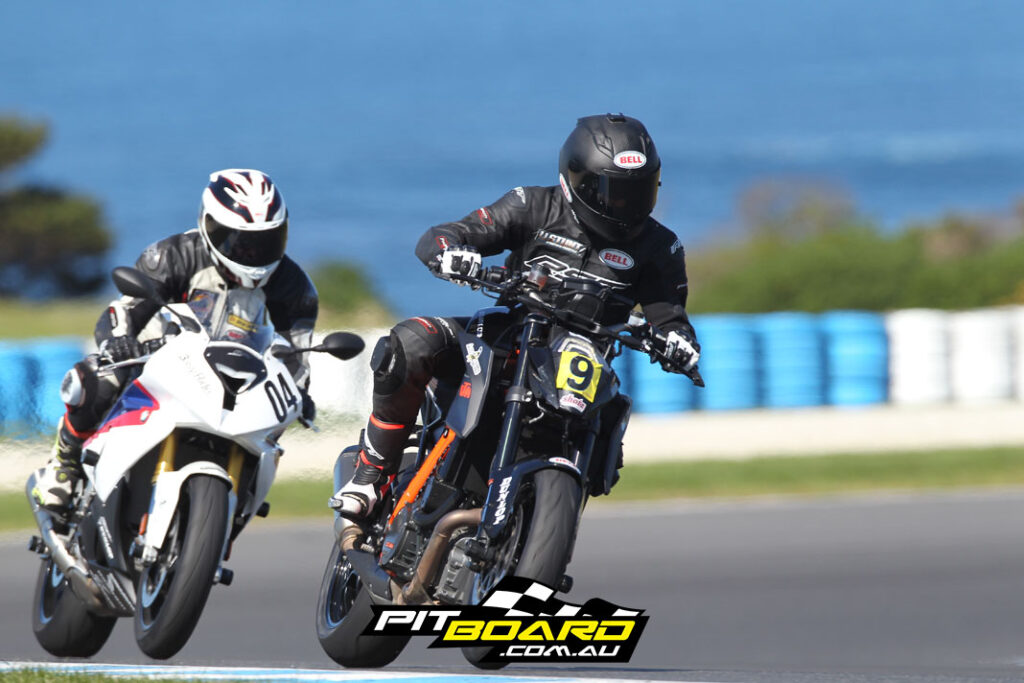
LEVEL 3
As with all the School days whether you are there for your first level or your fourth level it is very regimented and controlled during the day. I liked this, especially after having done the two other levels it gave me a sense of confidence and knowing about how the day will transpire and what to expect during that day. Good stuff!
Level 3 is really where it all starts to come together, the drills and skills you have learnt and developed with the previous two levels now give you the base to develop and to put these and the new skills that you will learn through the drills into practise.
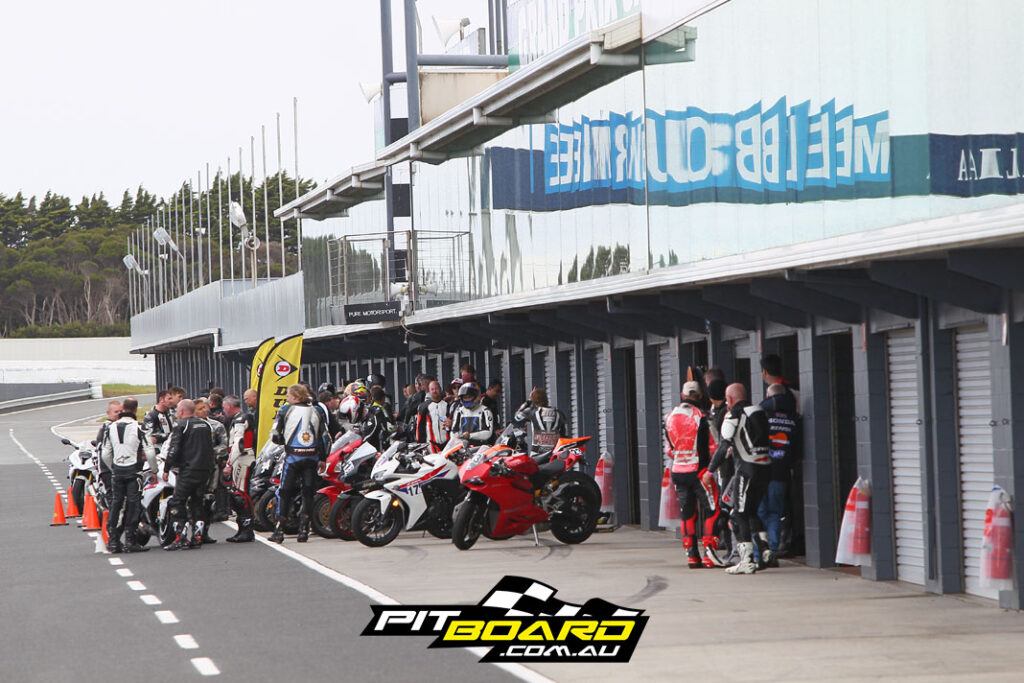
It all really starts for fall into place in level three. The coaching is very similar, you will spend time on track in a small group with coaches that will observe and check you on track, at the end of each session you will have a debrief and a critique of how you were doing. The coaches will give you practical, hand on tuition on a bike to show and highlight the drills and the body movements needed for some of the drills. The coaches are acutely aware that you are there for Level 3 training and they make every effort to talk to you and help you in any way that may improve how you can perform the drills, the coaches really do want to see you do well, no, better than that they want to see you do great!
Off track it’s back to the classroom – Steve Brouggy the owner of the franchise here in Australia is like a man possessed! But in the most absolute and positive way that could be imagined. It seems that his whole being is there for YOU! Steve has a charisma that is unique and very right for him and his teaching roles. The clarity, confidence and total certainty that he delivers the classroom training leave absolutely no one with any doubt as to what they have just been taught and no doubt in what they now need to do on track.
“The class room with Steve is not a chore, not a bore and not a waste of any second of your time, it is complete, exact and compelling, and it complements totally what the coaches are teaching you on the track.”
As with the other levels there is time to absorb what Steve has just coached you on in the classroom before you go on track again. I also found this time to make acquaintances with other riders in my level and learn a little about why they were there. Many were riders with years of road experience that needed to come up to speed so to speak with riding skills, many had done courses with other schools but were hear, as I was because of the need to learn more and learn in a different way to how others teach.
While others were looking at doing track days and wanted to get their skill and knowledge levels up before they did track days, others were long term track day junkies that recognised the need to improve their skill level, some were just new to motorcycling but wanted to learn as much as possible.
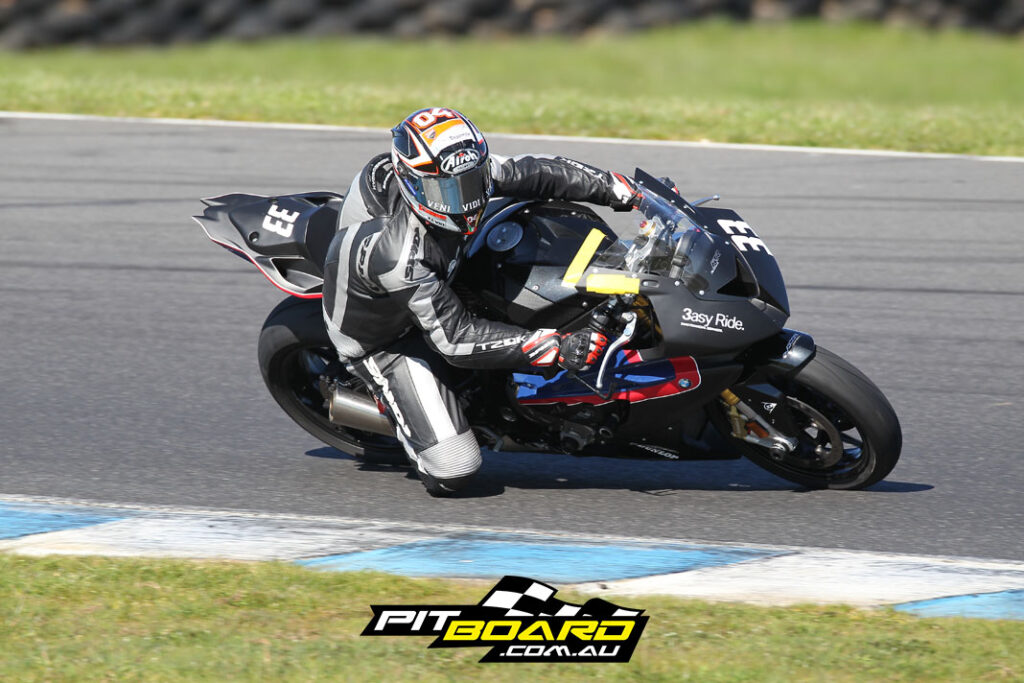
I suppose that this is what it is really about, as riders of whatever level of skill or experience, we need or want to know more, improve more, enjoy more, and understand more of what our life style is all about. Yes you can ignore all the experts out there and do it all on your own, but at what cost? Can you really learn and understand it all? Can you really afford to take twenty years of riding to develop the skills you need to stay safe on our roads today?
I don’t think so, That is why taking that step to enrol in motorcycle training is one of the most important steps you will ever take in your life and you can’t do much better than doing that training with the California Superbike School.
LEVEL 4
Over the past levels I’ve tried to give you all some insight into the California Superbike School and how it works and what you get out of it. We have had a look at the first three levels of the school, which you must do in order to progress and get the maximum out of these courses.
The first three levels bring you to a level of skill, control, confidence and self-awareness that can only be achieved by doing courses of this nature. They are designed and implemented in such a way as to make each compliment the previous and to make all the levels come together as one learning revelation by the end. Well that last paragraph is really a bit of a prelude to the final outcome.
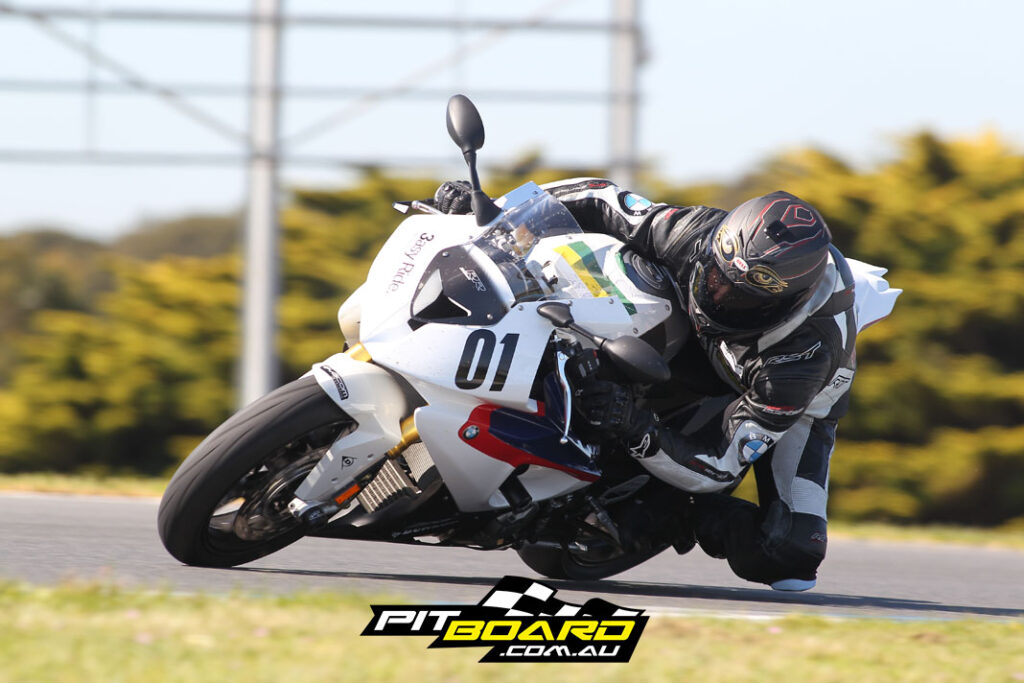
The level four course is conducted alongside the other courses over the same days as the other courses but this level is done in a far different and ultimately better way to what you have done and learnt in the previous levels. This is where it all comes together, this is where it all makes sense and this is where you really start to see the reasons for the drills. You discover the reasons for the levels and an understanding of the quality of coaching from the staff at the California Superbike School.
As I mentioned very early in these stories, I’ve been riding for over 40 years and have done a lot of riding, including racing both road and dirt, touring, bar hopping, cafe crawling. I’ve raced in snow, I’ve ridden a road bike through the Daintree and up the Cape and any other form of motorcycle riding that can be possibly done. All of this though has been done with a certain level of blissful ignorance as to what I was actually doing and why I was doing it. Sure I’ve developed some skills along the way, even won my share of trophies and titles – both state and national.
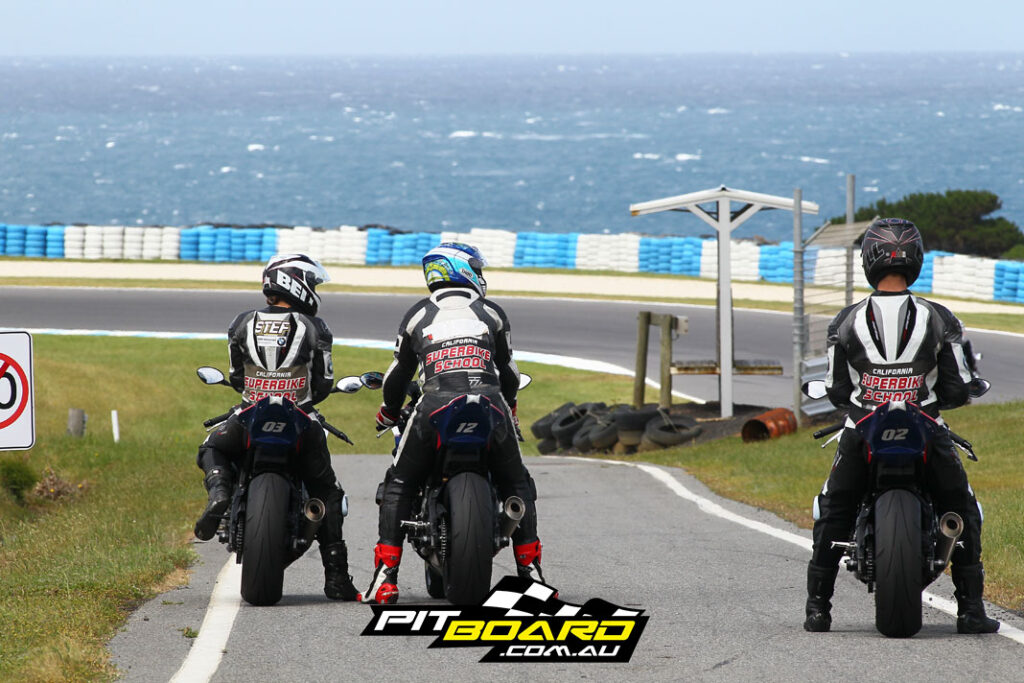
But I have to admit with humility that I learnt techniques, skills and heightened my awareness by participating in the California Superbike Schools. All of this culminates to level four, where it all happens – it’s the centre of the universe, it’s the Yoda of Star Wars, it’s the Wizard from OZ, it is the understanding of all things in the motorcycling world.
At this level in the School, you get a much more personal experience, the group size is small – about five or six. The coaches that are looking after you are some of the best in the business and at the highest levels within the California Superbike School system around the world. You have more time with the coach, you get closer scrutiny on the track and you get better personal evaluation of what you were doing. You get to have a full and thorough training day with coaches that care and want to see you improve and come away from the final level as the best rider you can.
Everything from the very first drill you do, to the culmination of all the days and drills learnt, are all finally understood in level four and you are shown, given, coached and critiqued in all that you have done and learnt.
All of this new found knowledge is what this is all about. Anything we can do as motorcyclists to improve our skills, better understand ourself and our motorcycle are qualities that we need and must have.
Anyone can ride a bike fast but to have the skills to truly get the best from the bike and yourself is something that very few of us can achieve from just experience on the road. We can all learn, we can all improve and we can all learn that fast is not the only thing a motorcycle is for.
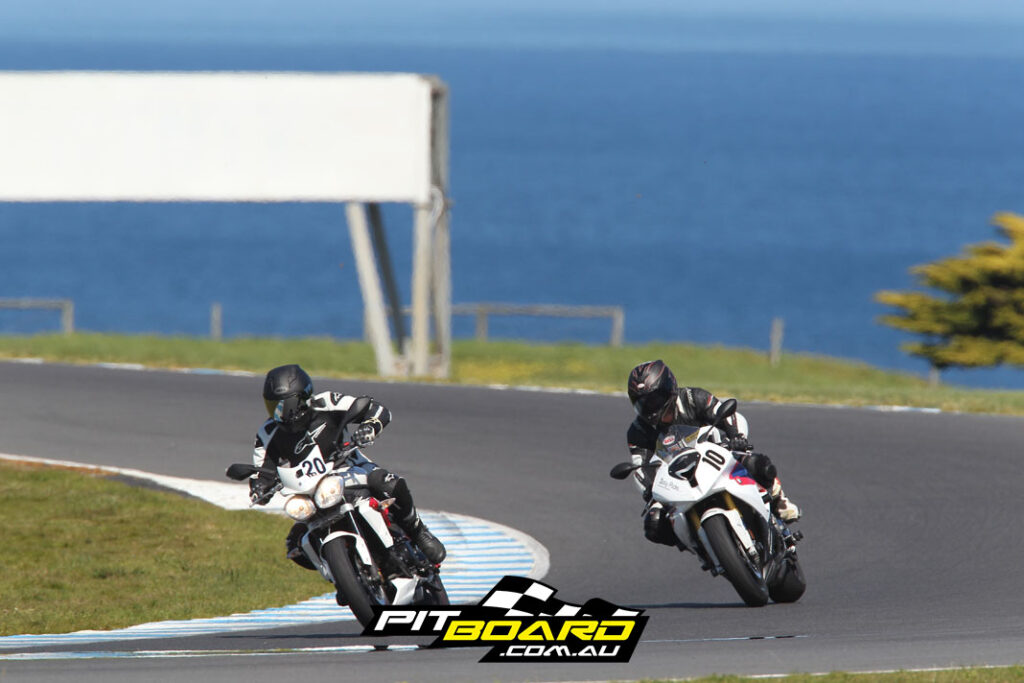
Schools also give us wisdom, we learn that there are limits to ourselves and to the motorcycle. These limits then act to control us better on the road, we now know that we can’t do 180km/h in the rain around a 40km/h corner. We have learnt that it is simply impossible. So we now can control our actions better, with more skill and more wisdom.



